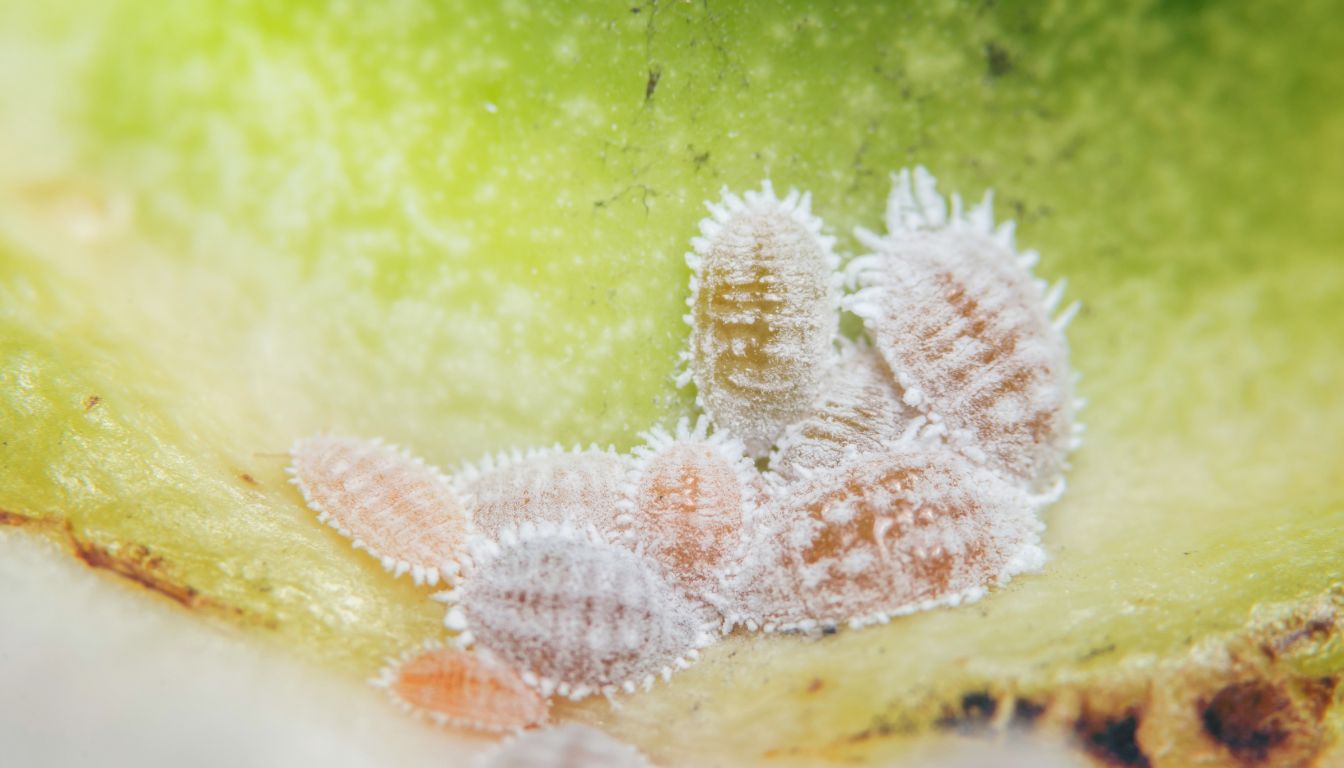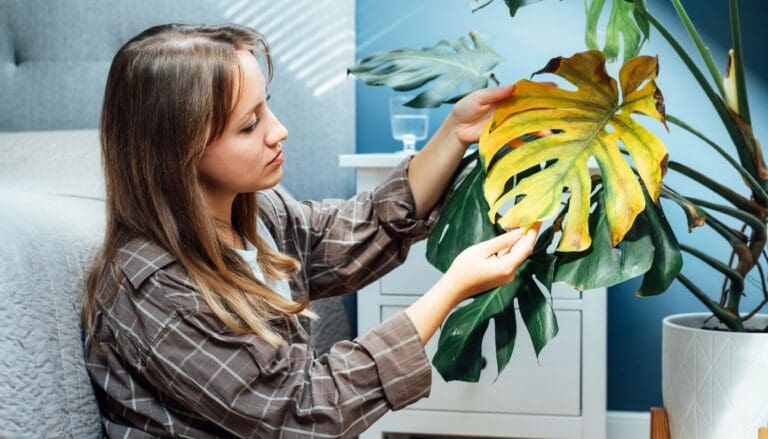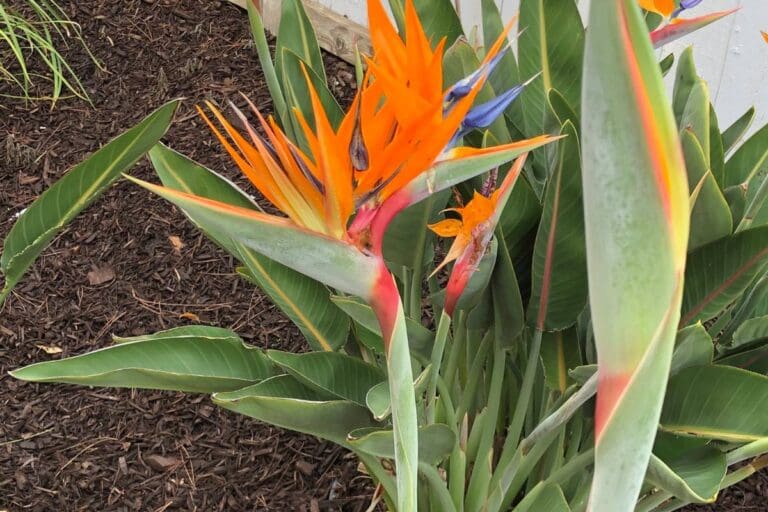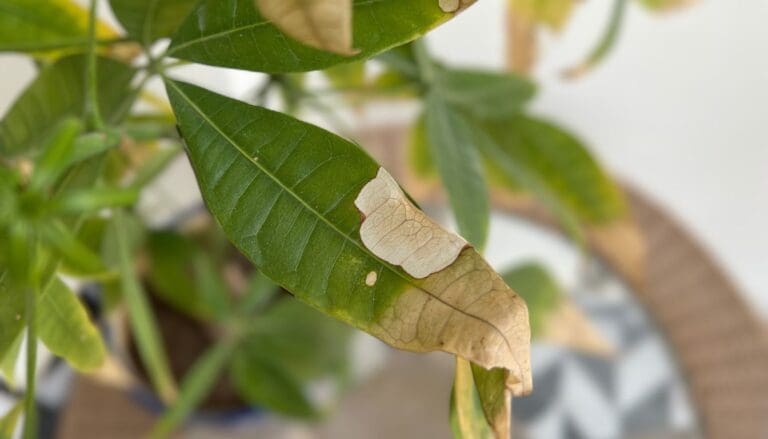2 Reasons Why Your Chinese Evergreen Leaves Are Sticky
Chinese evergreen is among the most popular houseplants in various colors and patterns. However, when their shiny leaves turn sticky, it’s a matter of concern for any gardener.
It is necessary to identify the reasons behind the sticky leaves and fix them to eliminate this problem. This article will help you understand why is your chinese evergreen sticky and how you can fix the same.
The primary reason cause of sticky leaves in Chinese evergreen is pest infestation. Most pests suck the sap from the plant, leaving behind a sugary liquid called honeydew, making the leaves sticky. Another reason for sticky leaves is guttation, where the plant secretes fluid through its leaves.
If you find that your Chinese evergreen’s leaves are sticky due to pest infestation, you need to take immediate measures to save them.
Please note: Simplify Plants is reader-supported. Some links in the post are affiliate links and I get a commission from purchases made through links in the post.
Why is my Chinese evergreen sticky?
If you find your Chinese evergreen leaves sticky, it’s due to pest infestation or through the release of guttation.
If the leaves feel sticky, you need to find out the exact reason for the stickiness to save your plant from getting into further issues. Lets us understand the reason for stickiness in detail.
Pest infestations

Pests are one of the primary reasons that make your Chinese evergreen leaves sticky. They infest your plant and suck out its sap from the leaves and leave a sticky substance behind called honeydew.
Honeydew is the by-product or poop that the insects release after absorbing the sugar and nutrients from the plant. It is sticky in texture due to the sugar present in the sap.
Chinese evergreen can become the center of attraction for a few pests like aphids, mealybugs, spider mites, etc. If the pests keep sucking the sap, they will absorb all its nutrients, making the plant weak and vulnerable.
Honeydew often drops on the lower leaves, attracting ants and other insects towards it. The insect invites fungi and mold to grow on the leaves, forming a wax-like coating over them.
It’s essential to clean the leaves as soon as you find honeydew to prevent further infestation.
How to identify which pest has attacked your Chinese evergreen?
Sure signs will help identify the specific type of pests that have attacked your plant.
Mealybugs: They are tiny, white, and soft-bodied pests that feed on the stems and leaves of plants. They appear as tiny cotton pieces causing your plant to have discolored leaves, dropping foliage, and sticky leaves.
Aphids: They are soft-bodied insects primarily present on the undersides of leaves. They can cause stunted growth, damaged leaves, and the honeydew secreted by them will encourage the growth of powdery mildew.
Scale: If scales start to feed on your Chinese evergreen, you may find tiny bumps across the leaves and stems. The bumps are usually yellow or brown.
Scales feed on your plant’s phloem sap, making them lose their foliage, having yellow leaves and stunted growth.
Spider mites: Spider mites stay underneath the leaves and form the web-like structure on the corners of the leaves. The webs are not visible to naked eyes, but their presence will make you feel the lower side of leaves sticky on touch.
Also read: Do Chinese Evergreen Get Bugs? (Common Bugs+How To Get Rid Of Them)
How to treat pest infestation on Chinese evergreen?
If you want to get rid of honeydew, remove the pests as quickly as possible. Treating the pests and keeping the leaves clean is the only way to remove the stickiness from your Chinese evergreen plants.
So let us now discuss the various methods of treating pests in your plant.
Treatment for mealybugs

If you notice some white dots or snow-like substances on the leaves, then it’s mealy bugs. To treat mealy bugs, isolate your plant in one place and inspect it properly.
If the infestation is light, it’s possible to treat them, but if the infestation is heavy, it’s difficult to save your plant from these bugs. You can treat mealybugs by following the steps given below:
- Dip cotton swabs in diluted alcohol mix and remove all the visible mealybugs. Gently clean the leaves with cotton swabs.
- You must use a damp paper towel and gently wipe the mealybugs from the leaves. After removing them, apply neem oil over the affected areas.
- You can apply neem oil over the leaves in case of light infestation. It is practical and non-toxic.
- You can use pesticides but follow the product’s label before application.
- If the infestation is heavy, you can make a solution by mixing 1 cup of rubbing alcohol, 2-3 drops of dish soap, and 1 liter of water. Fill the solution on a spray bottle and apply it over the plant.
Treatment for aphids

Aphids remain on the underside of leaves. They are tiny and white, but they will slowly turn brown as they suck the sap from the leaves.
You can treat aphids by following the steps given below:
- You can remove aphids by handpicking them after wearing gloves and putting them into a bucket of soap and water.
- You can wash the plant with a strong stream of water and keep them in the air to dry quickly.
- You can buy natural predators like ladybugs to feed on aphids.
- You can treat aphids by spraying them with a solution of dish detergent and warm water in the ratio of 1:4. After that, gently wipe off the infected area by dipping a cotton pad into the solution.
- If the infestation is heavy, you can prepare a solution by mixing 1 teaspoon of horticulture or neem oil and 1 teaspoon of dish soap with 1 quart of water. Fill the mixture in a spray bottle and apply it all over the plant. Do this for a few weeks to remove aphids altogether from your plant. This method is one of the effective ways to remove aphids from Chinese evergreen.
Treatment for scales

Scales are a little difficult to treat. They are mostly hidden under the leaves, so you should check your plant accordingly. If the underside of leaves seems sticky and dusty, scales are present there.
Scales breathe through their shells, and those shells protect them from insecticidal sprays, so either you can remove them by destroying their shell or suffocating them.
You can treat the scales by following the steps given below:
- In case of light infestation, you can apply the following method. Here you need to mix 1 tablespoon of dish detergent into 4 cups of warm water.
- Take a cotton swab, dip it into the water mixture, and carefully wipe the infected area.
- In heavy infestation, you can fill the liquid in a spray bottle and spray it all over the plant. This method will not allow them to breathe correctly, and they will suffocate and leave your plants. Apply this method every week to prevent scales infestation.
- Another way is by using insecticidal soap spray. You can use neem oil, horticulture oil, a natural way of suffocating scales. The oil will form a coating over their shell, which will block the air supply, and they won’t be able to breathe.
- You can also use tweezers or toothpicks to remove scales.
Treatment for spider mites

Spider mites are very small-sized bugs, making it difficult to see through naked eyes, so treating them is tricky. They are found in colonies on the underside of leaves.
You can treat spider mites by following the steps given below:
- You can give a shower to your plant with a strong stream of water so that bugs wash off.
- You can use neem oil, a natural pesticide, to remove bugs.
- Another method is mixing 2 teaspoons of neem oil, one teaspoon of detergent soap, and 1 liter of water in a spray bottle. You can prepare the above solution by mixing rubbing alcohol too when dish detergent soap is not available.
- After applying the spray, you can wipe the foliage with a cotton pad or paper towel by dipping it into that solution. This method is effective for killing spider mites.
Chinese evergreen guttation
Sometimes you may feel that your Chinese evergreen plant is sweating or crying. They are not sweating; instead, they are releasing sap. Chinese evergreen stores sap, which can make the leaves sticky.
When your plant is oversaturated, it will not handle too much water and will start to release the excess moisture through leaves by transpiration. Along with excess water, they will also release the sap. This is called guttation.
The sap from the plant will get evaporated through leaves and stems. It mainly occurs in humid conditions, especially in summers.
If you find no signs of pest but sap crystals over the leaves, then understand it’s due to guttation and not pest infestation. Gutattion doesn’t harm your plant, but it will sticky the leaves. So, cleaning is essential.
If you don’t clean the leaves, the sap will attract pests and ants, putting your plant in danger.
Is guttation harmful to Chinese evergreen?
Gutattion is not harmful to Chinese evergreen, and it is natural for them to release the excess moisture through transpiration and relax in high humid conditions.
But if too much guttation occurs, then your plant can fall at risk. If too many minerals and water evaporate, it will form white spots on the foliage.
The excess minerals can also damage plant cells, creating burn spots on the leaves. To avoid excess guttation, you can adapt the following measures:
Avoid overwatering: Guttation is often a result of overwatering. The guttation process will increase if you overwater your plants due to too much moisture loss from the leaves.
Overwatering can cause root rot and many other problems to your plant. Root rot will make your plant vulnerable to other diseases and pests.
Avoid over-fertilization: Fertilizers are composed of minerals, and when you overfertilize your plant, the excess minerals start to get deposited over the tips of the leaves, which can burn their leaves.
You may find white spots, too, which happen due to mineral accumulation.
Avoid using tap water: Tap water already has lots of added minerals. So using tap water will increase the chances of guttation.
How will you clean the sticky leaves of Chinese evergreen?

The honeydew released by pests is a sugary substance that ants and other insects will love to feed. To protect your plants from Ants, you must clean their leaves to remove the stickiness.
Here are the steps are given below for cleaning the leaves of your Chinese evergreen plant:
- Prepare a solution by mixing 1 tsp of dish detergent into 1 liter of water.
- Take a cotton swab and dip it into the solution.
- Wipe out the sticky sap from the leaves gently with the cotton swab.
- If dish detergent is not available, you can use rubbing alcohol.
How will you care for your Chinese evergreen plant?

Care is essential to keep your Chinese evergreen plant healthy and thriving. Proper care will protect them against pests and other problems.
Here are some care tips are given for your Chinese evergreen plant.
Provide your Chinese evergreen plant with filtered to bright light and keep them away from direct sunlight.
They grow well in low light conditions but keeping them in the dark area will increase the chances of pest infestation. So, adjust the light accordingly.
Never overwater your Chinese evergreen plant. Wet soil will make the roots mushy and weak. Such roots will become more vulnerable to root rot and pest problems.
Water your chinese evergreen plants only when the top 1-2 inches of the soil feels dry to touch.
Chinese evergreen plant does not need frequent fertilization as they are slow growers. You should fertilize with a well-balanced liquid fertilizer once a year during spring.
Overfertilization can make the roots toxic.
Guttation will cause the minerals and salts from the fertilizers to build up at the tip of the leaves, causing them to burn.
- Plant them in a wide pot and have enough drainage holes to avoid the problem of poor drainage.
- Use a well-aerated, well-drained, slightly acidic potting mix for growing your plant.
- Apply neem oil solution every month to your plant to keep them away from pests and diseases.
- Occasionally clean the leaves of your plant by wiping them with a soft, damp cloth or cotton pad to prevent stickiness and dust accumulation.
Reference: Wikipedia, Nasa clean air study, Missouri Botanical Garden, The University of Kansas, NC State University.
Recommended Garden Supplies
| Product Image | Our Recommended Gardening Supplies | Check Offers! |
|---|---|---|
Top Top
Top
Top
Top
Top
Top
Top
Top | rePotme Houseplant and Tropical Classic Potting Soil Mix | Check Offer On Amazon |
 Top
Top
Top
Top
Top
Top
Top
Top | Espoma Organic Indoor Plant Food | Check Offer On Amazon |
 Top
Top
Top
Top
Top
Top
Top
Top | GooingTop LED Grow Light 6000K Full Spectrum Clip Plant Growing Lamp | Check Offer On Amazon |
 Top
Top
Top
Top
Top
Top
Top
Top | Soil Moisture Meter | Check Offer On Amazon |
 Top
Top
Top
Top
Top
Top
Top
Top | Govee Hygrometer Thermometer, Bluetooth Enabled! | Check Offer On Amazon |
 Top
Top | LEVOIT Humidifiers for Large Room(Best For Plants) | Check Offer On Amazon |
 Top
Top
Top
Top
Top
Top
Top
Top | Upgraded DIY Automatic Drip Irrigation Kit, 15 Potted Houseplants Support | Check Offer On Amazon |
 Top
Top
Top
Top
Top
Top
Top
Top | Stainless Steel Heavy Duty Gardening Tool Set | Check Offer On Amazon |
 Top
Top
Top
Top
Top
Top
Top
Top | Bonide Insecticidal Soap | Check Offer On Amazon |
 Top
Top
Top
Top
Top
Top
Top
Top | Bonide 32 oz Spray Neem Oil for Organic Gardening | Check Offer On Amazon |
 Top
Top
Top
Top
Top
Top
Top
Top | Garden Safe Fungicide | Check Offer On Amazon |






